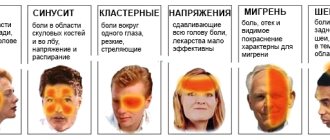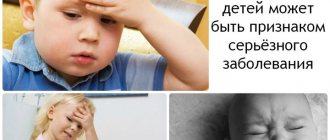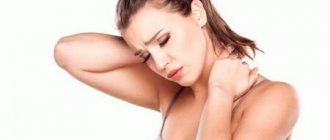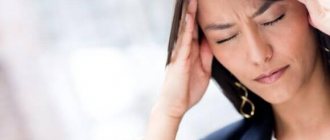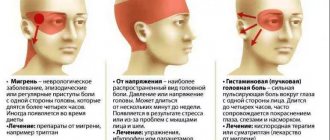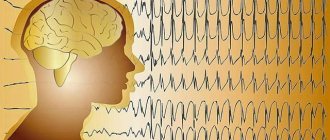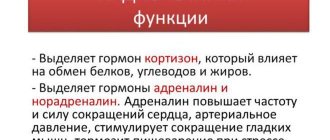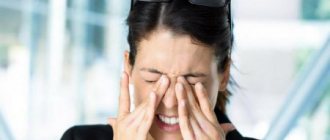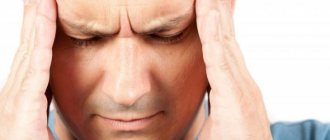SOS
A headache should not be left to chance - it can be the first symptom of a variety of diseases: hypertension, vegetative-vascular dystonia, renal and endocrine pathology, brain tumor, stroke, etc.
If the headache is accompanied by transient loss of vision, speech, weakness in the arm and/or leg (usually on one side of the body), sudden amnesia (in which a person temporarily loses orientation in space and forgets where he is and what does), you must immediately consult a doctor and undergo a serious examination, including ultrasound examination of large vessels (carotid arteries), ECG, echocardiography, detailed blood tests to determine the lipid profile, tendency to thrombosis, and, if necessary, CT or MRI of the brain and etc.
Types of headaches in women
Based on what causes pain, doctors divide them into two categories: primary headaches and secondary ones.
Primary
It is their independent and uncontrolled use that can cause the risk of developing severe complications, in particular exacerbation of diseases of the gastrointestinal tract.
The intake and dosage of medications should be carried out as recommended by a doctor. As an additional treatment procedure, the doctor may recommend sessions of electrophoresis, iontophoresis or other options for physiotherapeutic effects on the body.
Test yourself
Headaches can be of different types.
With tension pain: the pain is constant, pulling, aching, squeezing the entire head with a “hoop.”
With migraine: the pain is clearly defined, usually pulsating in nature and unilateral, predominantly frontotemporal localized. Another characteristic symptom of migraine is increased sound and light sensitivity combined with sweating, palpitations and nausea. Sometimes a migraine attack can be preceded by dizziness, the sensation of strange smells and even visual hallucinations (sparkling dots, zigzags, sparks from the eyes).
With a cluster headache: a burning, throbbing pain affects one half of the head and face (forehead, temple, orbit), it is so unbearable that it is impossible to sit or stand. During an attack, the eye may become red and watery (mainly on the side of pain), the nose may become stuffy, and the forehead may become covered with perspiration.
With high blood pressure: the pain is constant, dull, pressing, sometimes throbbing. Most often localized in the back of the head.
Important
If you have frequent headaches, it is important to remember: it is extremely dangerous to take painkillers in large quantities and for more than 15 days a month, and combined analgesics for no longer than 10 days. This can lead to serious consequences.
In addition, uncontrolled use of analgesics (especially in combination with barbiturates, caffeine, and some sedatives) can cause depression of the brain’s own anti-pain centers and a new, abusive (medicinal) headache. It is better not to self-medicate and consult a specialist.
Hypertensive patients should first measure their blood pressure, and only then take pills to relieve headaches. If blood pressure is elevated, the first step is to take measures to reduce it. And analgesics can be taken only if the headache persists even after the pressure normalizes.
If you have a headache, you should not:
- Drink alcohol. Its relaxing effect is just an illusion. Alcohol dilates blood vessels. And even if the pain subsides at first, then it returns again, with a vengeance. And for some people, alcohol immediately sharply intensifies the attack;
- Smoking. Nicotine causes a sharp spasm of blood vessels, which can make the pain even more intense;
- Apply a heating pad with ice to your head. Although different types of headaches feel different from each other, the person himself cannot always accurately understand its cause. And if for a tension headache, cold treatment does not harm, then for hypertension it can worsen your condition;
- Take a second analgesic tablet if the first one does not work. A persistent headache may indicate a serious illness, so in this case you should consult a doctor. In addition, an overdose of drugs can cause side effects.
Treatment
The therapeutic process involves not only relieving unpleasant symptoms, but also eliminating the root cause. In this case, taking medications, massage, therapeutic exercises, and, as a last resort, if the cause of headaches in women is a tumor, surgical intervention will help solve the problem.
Helpful information
Depending on the diagnosis, the treatment process differs. The range of medications used to relieve symptoms is also different. Most often, these include painkillers, antihypertensives, to relieve tension, eliminate dizziness, and antiemetics.
High blood pressure is reduced with Epan N - this diuretic should be taken once a day, but your doctor will give you more detailed instructions. Migraine attacks are eliminated by Sumitran and Sumamigren. If we are talking about headaches due to prolonged tension, Panadol with Milistan, Eferalgan is prescribed. They can also prescribe Almiral with Diclofenac, Nimesil, Nimid with Nimesulide. Ketorolac with Ketorol is considered no less effective.
Dizziness is eliminated by taking Vestibo and Betaserc. Relief of nausea when using Domperidone.
The duration of administration and their quantity are regulated by the attending physician after a complete diagnosis.
Massage
If the cause of the headache is cervical osteochondrosis, the doctor may prescribe a therapeutic massage. It can also be prescribed in other cases, if we are talking about poor blood supply to the brain or low blood pressure.
Therapeutic massage is somewhat different from the usual one and involves performing it by a specialist. The massage therapist should not sharply turn the patient’s head, as this may cause complications.
In addition to therapeutic massage, self-massage is performed. It is effective in the early stages, when symptoms are not pronounced. This process involves performing simple actions that are aimed at reducing pain:
- Rubbing the earlobes and behind the ears.
- Massage the area above the bridge of the nose between the eyebrows.
- Press and massage the junction between the thumb and index finger.
To get the effect, you need to do this for several minutes.
AiF recommends:
You can cope with headaches that arise after stress or increased physical activity by using a few simple techniques:
- ventilate the room well or, if time and weather permits, go for a walk in the fresh air;
- lie down, close your eyes. Sometimes a quarter of an hour in silence and darkness is enough for the attack to go away on its own;
- perform a self-massage of the head. With light stroking movements, walk from the forehead to the back of the head, from the crown to the ears, from the crown - down the neck, massage it, and then leisurely stroke the temples;
- Brew tea from the leaves and flowers of lavender or chamomile in a teapot. Mint will also work. Drink and try to fall asleep;
- Make a cold compress: add a few drops of peppermint or lavender essential oil to a bowl of cold water, wet a small towel, wring it out and place it on your forehead and temples.
We are cheerful and cheerful!
But medication alone is not enough. It is known that migraines can be provoked :
● excess or deficiency of physical activity, ● psychological fatigue, stress (migraine prefers responsible and overly conscientious people who are under constant mental stress), ● lack of sleep and oversleeping, ● hypoxia (lack of fresh air), ● taking hormonal medications, ● smoking, ● alcohol abuse, ● consumption of certain foods. For example, the well-known “gourmet migraine” often occurs after heavy feasts. High-risk foods include: alcoholic beverages (especially red wine), coffee, cheeses, vinegar, chocolate, citrus fruits, pizza, and MSG (found in most fast food products).
The doctor’s task is to identify all risk factors and teach the patient to avoid dangerous situations.
On a note
Those who suffer from frequent headaches should not indulge in the following products:
- Cheese, smoked herring, chicken liver, red wine, nuts - they contain the headache-provoking amino acid tyramine;
- Chocolate – it contains the headache-causing substance phenylethylamine;
- Processed foods, especially those richly flavored with spices and sauces from Asian and Chinese cuisine (such as sauerkraut). They also contain another headache provocateur – monosodoglutamate, which is sometimes hidden under the pseudonym “hydrolyzed vegetable protein”. There is even a special term for headaches caused by oriental culinary exoticism - “Chinese restaurant syndrome”;
- Bacon, sausages, salami and other sausages. To give them a beautiful pink tint, nitrites, which are undesirable for headaches, are added to them. They are especially abundant in cheap sausages, which are usually found in street hot dogs. For lovers of this type of fast food, there is a diagnosis - “headache from walking dogs”;
- Sugar substitutes, which contain aspartame and sweetener E 961 and are purchased by people suffering from diabetes, as well as adherents of low-calorie diets. Aspartame is also often found in chewing gum, low-calorie desserts, soda, candy, yogurt, vitamins and cough lozenges.
| Drugs | ||
| Non-narcotic analgesics | Medicines for the prevention and treatment of migraine. Triptans | Other antimigraine drugs |
Remember, self-medication is life-threatening; consult a doctor for advice on the use of any medications.
Buy the printed version of the directory at kiosks in your city or order it from the editorial office by phone or email [email protected] with the mark PM (indicate your full name, postal address and telephone number in the letter).
Why does a child often have a headache?
Interestingly, unlike adults, children, in addition to this discomfort, may experience abdominal cramps.
Also, childhood headaches (cephalalgia) are caused by bilaterality and short attacks.
To determine the nature, this problem is usually divided into 2 groups:
- Organic cephalalgia – meningitis, tumor, encephalitis.
- Functional cephalgia - fatigue, overexertion, circulatory disorders.
Many children suffer from arterial hypertension caused by disorders of the cardiovascular system. This problem can arise due to poor sleep patterns, weather sensitivity and hereditary predisposition. Headaches in this case occur due to lack of oxygen.
Another provocateur of childhood headaches is poor nutrition. Preservatives found in many products contribute to vasoconstriction, which leads to disruption of autonomic functions. The child’s body is not yet adapted to consume similar nutritional supplements, which leads to discomfort. For the same reason, women should follow a strict diet during pregnancy.
Why do teenagers often have headaches?
Since children cannot lead a sedentary lifestyle, the most common cause of cephalalgia is injury.
When communicating with friends, teenagers run and jump no worse than restless kids and rarely look at their feet. For many mothers, the period of ice slides becomes a serious cause for concern.
If, after a fall, bruises and scratches are not visually visible, but after a while pain appears, which can radiate to the eyes and be accompanied by dizziness, you should seriously consider visiting a doctor.
These symptoms may indicate a concussion that requires immediate treatment. Otherwise, headaches will continue even after several years.
Another reason for this discomfort in a teenager is hormonal changes in the body. This process entails a change in the child’s appearance and voice, but is accompanied by temporary disturbances in the functioning of the body.
Due to private headaches, psychosis and emotional instability of a teenager are observed. Therefore, in this case, parents need to be patient, create the most favorable atmosphere and do not forget to support their growing child.


